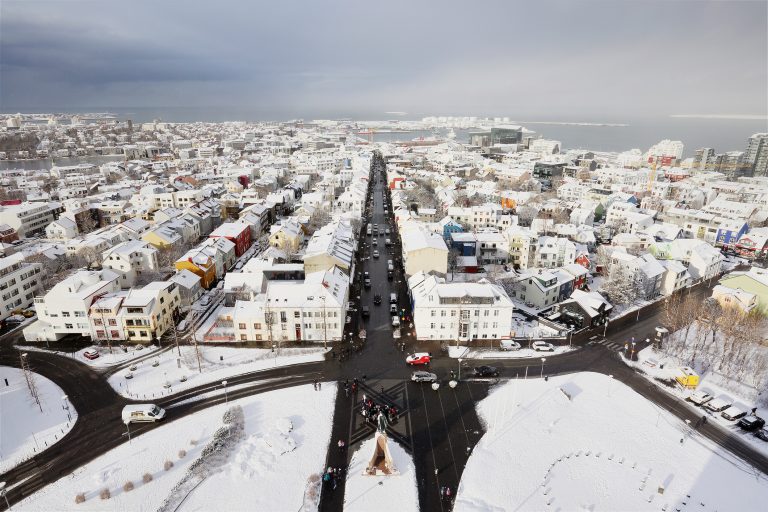
Iceland has 364,000 inhabitants. Currently, roughly 10% of them are aware of whether or not they have COVID-19. This is due to a massive undertaking by Kári Stefánsson, MD, Dr. Med., the co-founder, president, and CEO of deCODE genetics—a population genetics powerhouse that has routinely produced new discoveries in fields such as genomic architecture, cancer genetics, and mental illness. Now, deCODE has combined the most intensive targeted testing and general screening of any population to date for SARS-CoV-2.
The work is published in an article titled, “Spread of SARS-CoV-2 in the Icelandic Population” published in the New England Journal of Medicine.
deCODE started testing high-risk people—defined as those who were symptomatic (cough, fever, body aches, and shortness of breath) and who were returning to Iceland from countries or regions that were classified as high risk or who had been in contact with infected persons—on January 31. It took one month to confirm the first SARS-CoV-2 infection, on February 28, in a person who had just returned from northern Italy. Overall, roughly 13% of people in the high-risk group (1,221 of 9,199) tested positive for SARS-CoV-2.
A separate group of the general population was also tested, starting on March 13. The testing was open to all residents of Iceland who were symptom-free or who had mild symptoms of the common cold. The population screening used two strategies: issuing an open invitation to 10,797 persons and sending random invitations to 2,283 persons. Of those tested in the general population, 87 (0.8%) in the open-invitation screening and 13 (0.6%) in the random-population screening tested positive for the virus.
Young children (under 10) and females were less likely to test positive for SARS-CoV-2 than adolescents or adults and males. The authors write that, “whether the lower incidence of positive results in these two groups resulted from less exposure to the virus or from biologic resistance is not known.”
All participants who tested positive for SARS-CoV-2 were required to self-isolate until 10 days after fever had subsided or until they tested negative, and all contacts of these participants were required to self-quarantine for two weeks.
The frequency of SARS-CoV-2 infection in the overall Icelandic population remained stable from March 13 to April 1, a finding that “appears to indicate that the containment measures had been working.”
Stefánsson told Meg Tirrell during an interview on CNBC that what is different about Iceland’s response to COVID-19 is both that they started screening very early and that they are testing the general population in addition to people at high risk. It is the combination, he asserts, of broad-based screening, vigorous tracking of contacts of the infected, followed by isolation of the infected and quarantining of their contacts that seems to have “brought this epidemic under some sort of control.”
Calls it like he sees it
Stefánsson co-founded deCODE Genetics in 1996, weathering political and public controversy in the early years as the company built a nationwide genomic database. In 2013, Stefánsson achieved a near miracle, resuscitating the company after bankruptcy and helping to engineer its $600-million acquisition by Amgen. To the credit of all involved, deCODE has remained vibrant and independent, positioning it to make discoveries such as this new report on COVID-19.
When Tirrell asked Stefánsson if COVID-19 control similar to Iceland’s would be possible in a country the size of the United States, he answered that “it would be even easier” with their incredible talent and resources. It is, Stefánsson asserted, about “the will and desire to do this.”
“The methods that we have used in Iceland, to test widely, to sequence the virus from everyone infected, to bring about this kind of control… these are all methods that we learned from the Americans.”
“You taught us how to do this.” But, “you haven’t been doing this yourself.” And, that, Stefánsson said, “is pretty sad.”
Trace back to the beginning
deCODE sequenced the virus from 643 individuals and drew a family tree of the different haplotypes found. Analysis of sequence data reveals that the haplotypes of the virus detected in the early targeted testing were almost entirely of the A2 clade originating in Austria and Italy and entering Iceland with people returning from skiing holidays. By contrast, the cases identified in the more recent targeted testing and in deCODE’s population screening show that various haplotypes of the A1 clade prevalent in countries such as the U.K. had become more common, and that there is now a wide and growing variety of haplotypes present in the population.
This suggests that the virus entered Iceland from many countries, including those that were then deemed low-risk. Currently, 291 mutations have been found in the country that have not been identified elsewhere. These data, and the fact that the majority of new infections are coming from those already in quarantine, underscores the general efficacy of public health efforts to track and isolate these contacts and further control the spread of the virus.
“To bend the curve of this pandemic as quickly as possible, we need scientifically accurate information on how COVID-19 spreads in communities,” said Robert A. Bradway, chairman and CEO at Amgen.
“In attempting to carefully map the molecular epidemiology of COVID-19 in Iceland,” notes Stefánsson, “we hope to provide the entire world with data to use in the collective global effort to curb the spread of the disease.”













